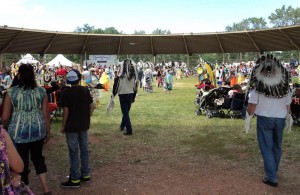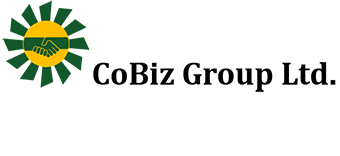Hydrocarbon Drilling Project – Blood Indian Reserve
 Overview
Overview
Project type: Oil and gas exploration and production
Location: Blood Indian Reserve – southern Alberta, Canada
Date: July, 1993 to Sept., 1995
Land base: 55,000 acres (22,200 hectares)
Capital expenditure: $ 3,000,000 Cdn
Timeline: 24 months
Director/ executive: Tom MacKay, P.Eng
Summary
In July, 1993, Tom MacKay, President of Chancellor Energy Resources Inc. negotiated a hydrocarbon exploration program with the Chief and Council of the Blood Indian Tribe. The program involved exploration for oil and gas by Chancellor, a Canadian resource development company, on tribal lands. Exploration was undertaken within the constraints of cultural sensitivity on tribal traditional lands and employment of tribal members. A substantial gas field was discovered and developed. A large oil field was discovered. Revenue from these discoveries was re-invested within the Blood Reserve to improve standards of living and to enhance traditional tribal cultural practices.
Introduction
Alberta, a province located in western Canada, has been an important producer of oil and gas for over one hundred years. Historically several billion barrels of oil and trillion feet of natural gas has been produced from thousands of wells in the province. Currently, the province produces several million barrels of oil per day and is a significant source of hydrocarbon production in North America.
However, historically very little oil and natural gas production has occurred on First Nations (Indian) tribal lands, notwithstanding that such lands are extensive and widely dispersed throughout Alberta. Oil and gas companies have shown reluctance to operate on tribal lands (reserves) because of economic barriers and a lack of understanding of tribal cultural issues.
Project
Chancellor Energy Resources Inc, led by Tom MacKay as president, decided in 1993 to approach the leaders of the Blood Tribe in southern Alberta to conduct oil and gas exploration on the Blood Reserve. After conferring with the tribe’s chief and council and several of the tribe’s elders, an agreement was reached. The size of the agreement, covering 55,000 acres of the Blood Reserve, was significant to that date within Alberta. The agreement called for Chancellor to undertake a capital expenditure commitment of well drilling and other exploration activity. As well, Chancellor undertook to recognize and protect unique historical and cultural aspects of the reserve lands, including teepee rings, old encampments, and grounds sacred to tribal clans.
Over the following two years, regular consultations were held with tribal leaders as drilling commenced. Members of the tribe were employed by Chancellor in drill site security, well site preparation, fencing, and trucking operations. As well, a tribal member was employed in Chancellor’s head office as a technical assistant under a training program.
Chancellor discovered a new natural gas field on the Blood Reserve within six months of the start of the drilling program. A major pipeline was built on the reserve to provide access to gas markets. Approximately a year later, Chancellor made a new oil discovery, which eventually resulted in over fifty oil wells being drilled on the Blood Reserve.
During the program, Tom MacKay and some of Chancellor’s personnel met regularly with Blood Tribe elders to ensure that Chancellor’s drilling and production activities were in harmony with tribal cultural sensitivities. Field work was only undertaken if there was certainty that such work would not negatively impact issues relating to sacred grounds and historical sites.
In addition to capital expenditures relating to its agreement with the Blood Tribe, Chancellor provided funds to the tribe to assist in the construction of facilities used to hold traditional cultural events. As well, funds were given to allow the repatriation of tribal historical artifacts, taken a century ago, from museums in Canada and elsewhere.
In 1995, Tom MacKay was inducted as a lifetime member into the Kainai Honorary Chieftain Society of the Blood Tribe. Membership is limited to forty individuals and includes the current and a former Prime Minister of Canada, Prince Charles of England and formerly Pope John Paul II. MacKay’s involvement with the Blood Tribe continues today in the area of scholarship awards to young tribal members, as well as advice on issues involving continued oil and gas development on the reserve.
Conclusion
The consultative relationship between Chancellor Energy and the Blood Tribe resulted in economic success benefitting both entities, while enhancing cultural affairs within the Blood Tribe. This approach represents a model which can be used in future relationships between resource companies and traditional land owners.
